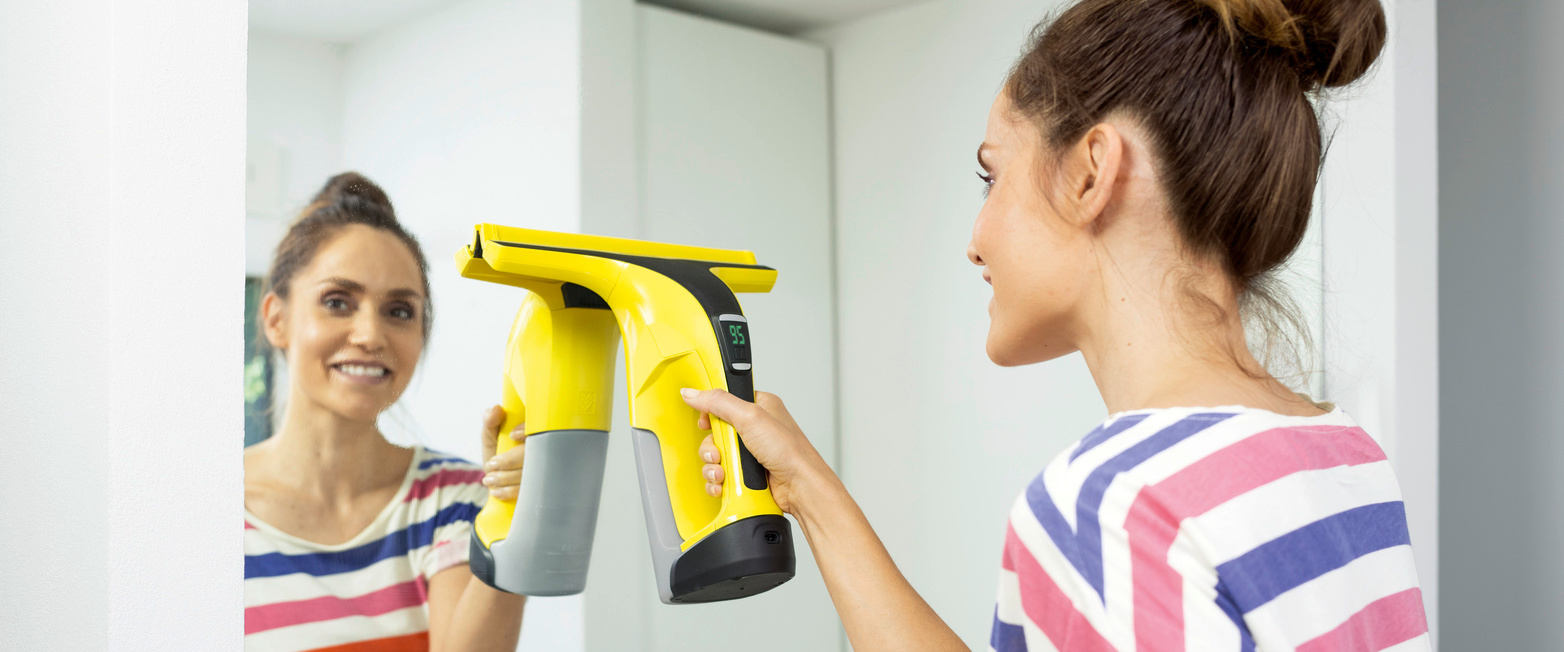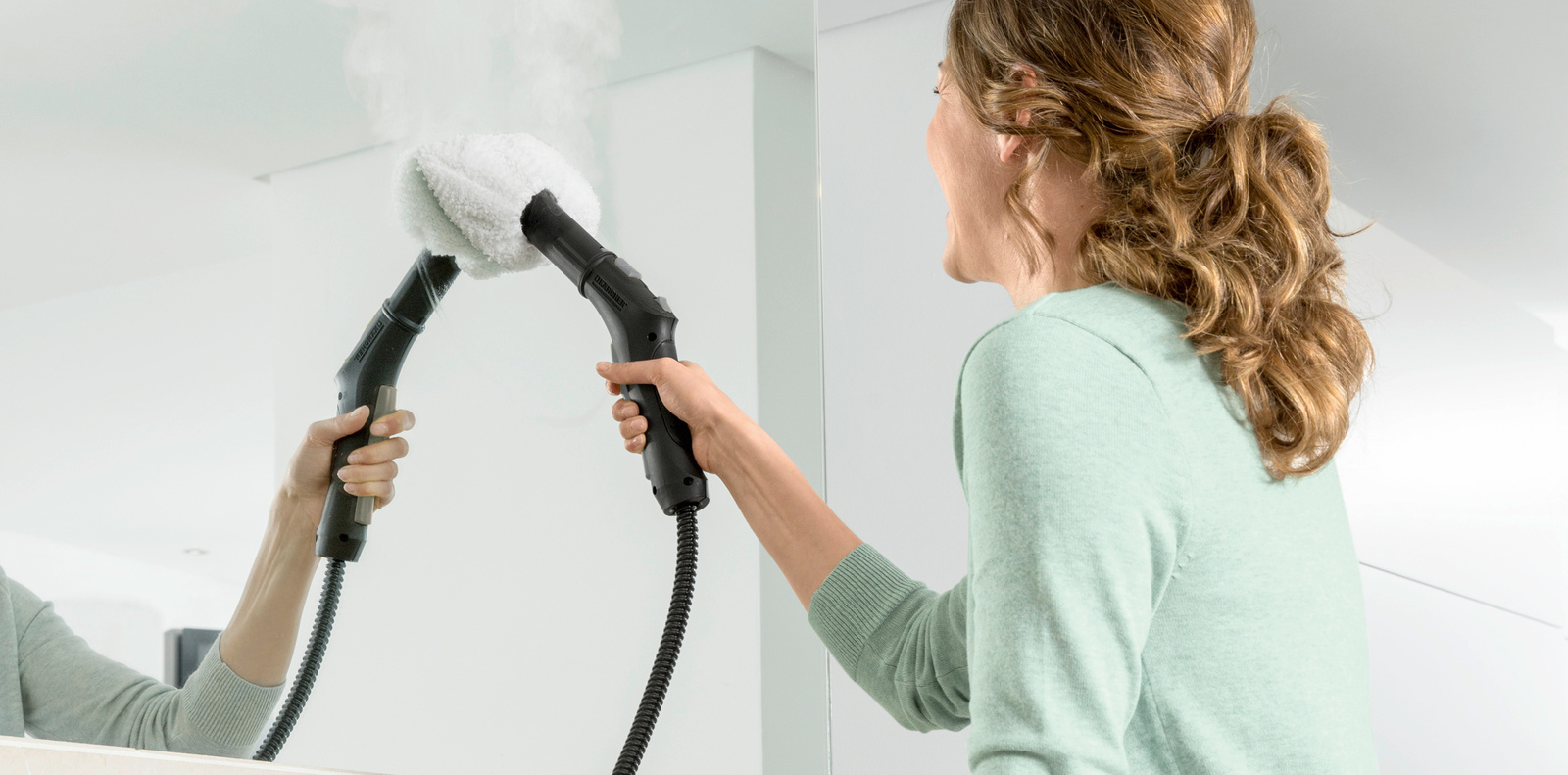Cleaning mirrors
Specks of toothpaste, fingerprints, hairspray, dust – you have only just cleaned the bathroom mirror when it is dirty again. Mirrors in the hallway or in the bedroom also become unsightly over time. With these tips and household remedies, you can clean quickly, gently and without streaks – all without using expensive cleaning agents.

Mirrors are delicate
A mirror requires special attention. This is due to its composition: It consists of a glass plate, a silver or aluminium coating, and multiple layers of lacquer. The silver coating, which is responsible for the reflection and has open edges, and its multi-layer coating make a mirror fragile.
A mirror with no frame may therefore change over time. If inappropriate cleaners are used, water droplets cannot be removed at the edge. Also vapors from solvents, such as nail varnish remover, can affect it.
The edge area is therefore the most fragile part of the mirror. To ensure that it does not rust at the sides, it is best to not use any detergents when cleaning it. Water and simple household remedies are usually sufficient to clean mirrors.
Caution: Delicate objects and surfaces
In the bathroom, you should remove utensils, such as soap dispensers or toothbrushes, which are often stored on shelves or sinks below the mirror, before cleaning the mirror. This ensures that the cleaning water does not drip onto them.
In other rooms, water-sensitive surfaces or floors below the mirror should be covered with a cloth as a precautionary measure.
Removing heavy dirt
Over time, with bathroom mirrors in particular, it's not just water-soluble substances that settle on the mirror.
Hairspray and gel, cosmetics such as lipstick and mascara, or fingerprints can often not be removed solely with water. A soft damp cloth with a squirt of dish liquid helps with this. Simply apply it to the mirror, smear it and rinse with clean water.
As an alternative to using dish liquid, glass cleaners or window cleaners are also suitable. Caution is required here, since detergent may attack and discolor the mirror film on the edge of the mirror. You should always take care to stay away from the edges when possible, or to thoroughly rub these dry after cleaning. However, the best option when cleaning mirrors is to omit cleaning agents entirely.


Cleaning mirrors with the steam cleaner
Mirrors can be cleaned without the need for any detergents or household remedies when you use a steam cleaner. The hot steam loosens even stubborn dirt effortlessly:
- First, steam the glass surface evenly using a hand nozzle with a microfiber cover, and loosen the dirt by rubbing. Alternatively, the surface can be steamed using a detail nozzle if you keep a distance of a few inches.
- Then remove the "steam water" using a squeegee, a cordless Window Vac or a microfiber cloth, and carefully rub the edges dry.
Tip to tackle foggy mirrors in the bathroom
We all know the feeling: after showering, mirrors are often heavily covered in mist. The moisture can be quickly vacuumed away using a Window Vac. Another trick: Briefly hold a hairdryer in front of the mirror until there is no longer any water condensate remaining.







